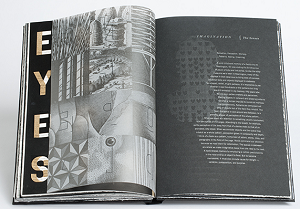
The metaphor, the imaginary and the veiling
We have already posited that veiling is an essential part of truth and beauty, in Paul Ricoeur this is more clear in his “Living Metaphor” (1975), because part of his phenomenological hermeneutics is in essential relation to the work of art, in which he the passage from the archaeological moment of hermeneutics to the teleological, that is, the logic of the ends, beyond the propositional logic.
clear in his “Living Metaphor” (1975), because part of his phenomenological hermeneutics is in essential relation to the work of art, in which he the passage from the archaeological moment of hermeneutics to the teleological, that is, the logic of the ends, beyond the propositional logic.
In the Greek mimesis, the artistic production and the new had meant as instruments that give meaning to reality, but it surpasses it and it can be said there was also something teleological.
This is entirely valid, for in reading the Living Metaphor one realizes that it is a rereading of Aristotle’s Poetics, but he himself clarifies the difference by exposing that the metaphor goes beyond (meta) and transposes (pher) into a thing that designates another object, while mimesis is the idea of imitation.
But beyond the metaphor the important question in Ricoeur is that of the imagination, it must be separated from the virtual, the unpublished lectures of Paul Ricoeur in the United States, were documented and commented, this already a translation, by George H. Taylor, where the concept of “producing imagination” appears in four categories: utopian, epistemological, poetic and symbolic sacrum (Taylor, 2006), which seem to me to be more related to the virtual.
Aristotle himself states that this figure of speech (metonymy – substitution of the word, synecdoche – replaces the part for the whole, etc.) is tangent to those who wish to express questions in orality and must do so in writing.
Let us make a passage, using resources from the virtual, from the syntax (the structure of the sentence) to the meaning (its semantics) arriving at the logic of discourse (hermeneutics), this comes from a theory of the substitution of meaning (false semantics in many discourses) for a theory of meaning, a logic underlying the hermeneutic, no longer as dogmatic truth, but as dialogical truth.
The question of classification facing Enlightenment and encyclopedism will result in Gadamer’s question if there is no underlying metaphor throughout it, while Derrida asks whether there is no rationalist ability to classify all objects conceptually.
Byung-Chul Han responds non-dualistically, the truth and the beautiful are “veiled” and only that is able to see through this veil the desired “clearing” arrives, then the metaphor is a resource and dialogic hermeneutics a path, this path oscillates between the real and the virtual.
The virtual is thus the visible beyond the veil, and the real is the unveiled in the present, the representative, whose memory in the next moment is re-present or imaginary.
Chul Han also speaks of the use of metaphor in the Bible as a purposeful resource for “making them the object of desire”, I think it is more than this, that reaching the truth is done in steps and that much of life is still a mystery .
RICOEUR, P. La Métaphore Vive, Paris, Éditions du Seuil, 1975.
TAYLOR, G. H., Ricœur’s Philosophy of Imagination. Journal of French Philosophy, Vol. 16, p. 93, 2006; U. of Pittsburgh Legal Studies Research.









